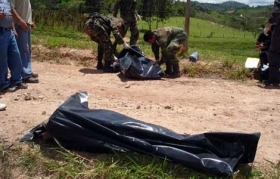Colombia recorded a total of 17,459 homicides in 2010, according to data released by Colombia’s primary forensic science institute, known as Medicina Legal.
This is a slight decrease from 2009, when Medicina Legal counted 17,717 murders.
The 2010 figure is 2,221 more than the amount recorded by police. Medicina Legal and police homicide data typically differ because police do not include victims who are wounded and later died as a result of their injuries.
Most notable in the Medicina Legal report is the rising homicide rates in urban areas. Last year 78 percent of all violent deaths in the country were recorded in cities, up five percent from 2009. Violence in the countryside, meanwhile, appears to be decreasing, with homicides in rural areas down 20 percent compared to last year’s figures. As observed by InSight Crime, this is part of an ongoing trend in Colombia that is seeing violence shift from the countryside into cities.
The report indicates that about 62 percent of those killed in 2010 were aged between 20 and 39; slightly over half were women.
Homicide rates have been steadily declining in Colombia since 2002, until murders experienced a 16 percent jump between 2008 and 2009. Accompanying the rise in murders is increased micro-trafficking and gang violence in cities, thanks to the fragmentation of Colombia’s criminal groups. A new sustained offensive by guerrilla group the Revolutionary Armed Forces of Colombia (Fuerzas Armadas Revolucionarias de Colombia – FARC) also accounts for the increase in violence.
Colombia’s national homicide rate is 34 per 100,000 inhabitants.

